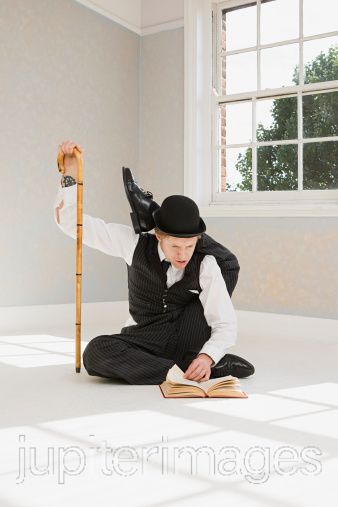I just won an award for this post! I submitted it to a blogging carnival, where you can read other great offerings on the topic of Bullying!


___________________
I have been doing much thinking about teaching and the nature of teaching and the purpose of teaching. My ideas are incomplete but I thought I'd do some sharing anyhow. I got the great pleasure of hanging out with
Rory Miller the other day. We took a long walk. It is rare (for me) to be in the presence of someone I can talk about anything with. So unusual. It made me reflect;
am I like that? Most of the time people are exerting a enormous amount of effort to hide their true nature. We also spend tons of energy pretending to ourselves that we don't see what is happening socially. What a relief to meet someone who is truly unpretentious.
I got Rory to read Impro by Keith Johnstone, and now he is running around telling people that
Martial Arts is to Fighting, as
Acting is to Improvising. A significant part of Johnstone's book is about teaching, and we talked a lot about it. How much of teaching is just failure of the teacher to deeply understand the subject? How much of teaching is un-conditioning negative behavior learned from loving parents who care so much they can not see what they have done? How easy it is to be unaware of what behaviors we are reinforcing and what behaviors we are suppressing. When I woke up the next day after talking to Rory it occurred to me that I may love teaching because I lack confidence. I may even intentionally put myself in difficult teaching situations because I get a physiological thrill from the see-saw effect of the fear that I will fail miserably followed immediately by elation when things go well. How would my teaching change if I actually felt confident? or indifferent?
--------
Anti-bullying is one of the latest fads in education, and it is being used by a lot of martial arts teachers to market their programs. When I think of bullying I think of my experience with Johnstone. Bullying is a social game. It can be taught as a game. The idea that --
a person being bullied is not in control-- is an illusion. Talking about this is stupid. You can either play a bullying game and experience it for yourself or you can talk about it for the rest of your life. Such games can raise fascinating questions about whether or not we are in conscious control of our actions. I had a kid claim he absolutely could not stand still, and that I could ask his mother about this for verification. At that moment I was really wishing that a tiger would wander into the dojo and test his thesis for him.
As Rory pointed out, one of the consequences of "zero tolerance for violence" in schools is that now there are bullies who are physically smaller than the people they are bullying. I had verification of this from some students who came to me a few months ago asking about how they could deal with this kid who constantly hits them, usually on the head. He is smaller than all of them and they were claiming powerlessness. Joss Whedon made a film about "zero tolerance" policies. It's called
Serenity. In the film, as in real life, such policies have horrifying unintended consequences. No doubt we are training a generation of super-bullies. I responded to my students by having them play insult and complement games. It's pretty simple, you face off and insult your partner (keep it personal, keep about him), he thanks you and insults you back, you thank him and then you complement him, then he complements you back, then back to insults, over and over. The faster the better. At first most students will make weak offers like "your shirt is messy," and they will forget to thank their partner. As they get better at it, the insults are more and more real like, "your bald spot is a crusty white puke." Then we add self-complements and self-insults.
This leads to my 'Rules for Bullies' number one, which is also my rule of self-defense number one:
accept all offers. If someone hits you with a baseball bat, keep playing the scene. Never pretend it didn't happen. If you get killed come back as a ghost and haunt that #%$@# right away! Keep the action moving. If you are trying to bully someone stay focuses on it being their fault! That annoying twerp (with "zero tolerance" it could be--a handsome jock) is just taking up space, time and air that rightfully belongs to you! You are the bully, exercise your birth right! Make them pay! If you are being bullied, for God's sake man, accept all offers!
Confess to all accusations immediately and admit to all wrong doing, it's even OK to make up bad things you did and confess to them as well. But to play this game you must understand that the space belongs to the bully and you are only there to have fun at their expense. There are two ways to play, if the bully gets closer take up more space, get languid, put your feet up on the cafeteria table, better yet, lay back on the table with your legs spread if necessary reach out in all direction, yawn, drool, as they move away, get smaller.
You will control them like an insect with a chip in it's head. The game also works just as well if you shrink and whimper as they get closer and you get bigger as they move away.
Our perception of space is plastic. It is only when we think it is fixed that we get into problems. Bullies are not predators. They are purely social animals. Social animals are constantly trying to maintain and manage their identities, belongings, and status. Non-attachment to those things is social freedom. Knowing this intellectually means nothing. Knowing it kinesthetically is total social freedom. But knowledge of this sort is also expertise in trance. The ability to go in and out of a trance is a skill. But it is also a risk. The traditional Chinese way to think about this is that there are ghosts and demons lurking about all the time, attracted by passion, and fear, and when you go into a trance they start eating your kidneys. Go there too passionately or for too long and you will get stuck in the trance, you may even acquire a ghost body that stays with you...because you are it's food supply.
This is the essence of what I teach: How you live in your body is determined by the rituals you use to inhabit animated space.
Rory had an interesting rule of thumb;
it is to the extent that you really care about something that you are likely to make poor decisions about it. That's because our sense of caring
is the limbic system of our brain, not the rational part. There are strategies one can use to get around this, like actually taking other people's advice, or externalizing the decision by giving it to another person or using an astrological calculation. The Sunzi has a good story about this: One general sent the opposing general a jar of wine that actually contained his piss. Having tasted the piss, the general got so angry that the next day he made a bad decision on the battle field which exposed his vulnerabilities and that was his
final battle.
What is the lesson? if you get a jar of piss sent to you--keep playing the scene! Drink a few glasses and wonder why you aren't getting drunk. Or send a return jar filled with peach schnapps!
Rory talked about his teaching as giving people permission to act on what they already know to be true from their own experience. A potent idea. I believe I'm doing that in the kinesthetic realm too, but I wonder sometimes how deep or far away that experience might be. For example, can people go straight to remembering how they moved before the first time they got frustrated trying to put two tiny Legos together? Can they remember all that wasted effort? Can they return to that effortlessness without the shame of clumsiness or the shame of being
too damn cute?There are two basic ways to deal with bullies. Make it too much trouble for the bully to bother with you, or get a group of friends together and beat the bully up. It sounds simple, but these are important and newanced social skills. However,
and this is a big however, a lot of what passes for education is actually bullying. To teach these skills to kids means that they will have a choice.
Have no doubt, kids able to make choices for themselves will bring down the education system as we know it.





 The way to achieve flexibility is to practice everyday.
The way to achieve flexibility is to practice everyday.